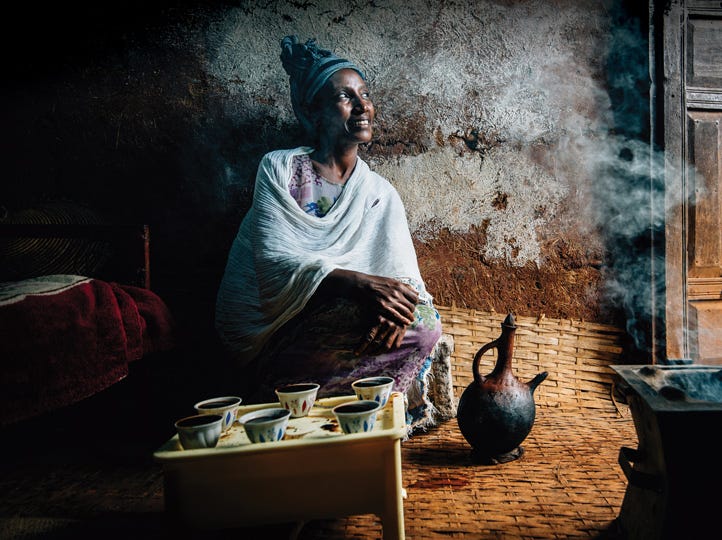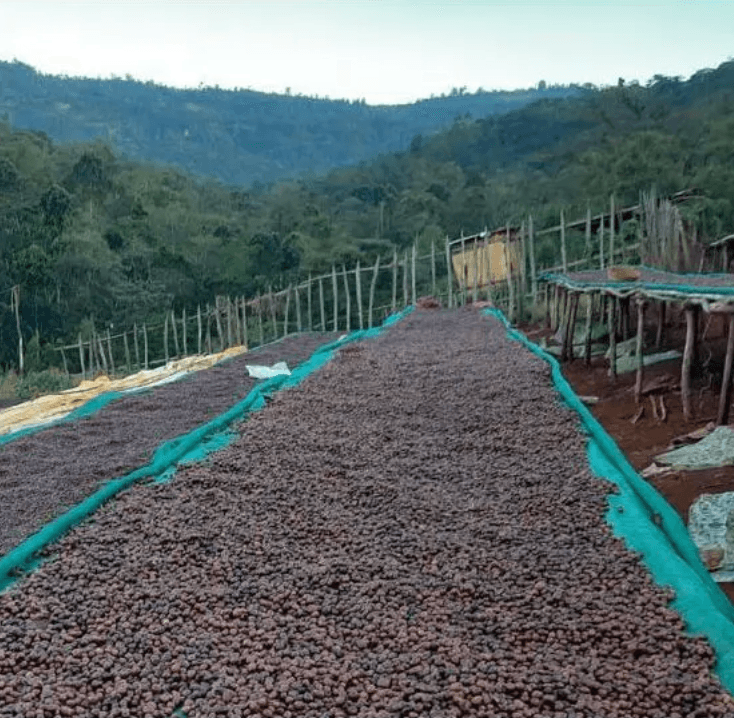Beanroasters.se
Ethiopia Kefalech Tariku Gr. 1 Natural (Single Farmer)
Ethiopia Kefalech Tariku Gr. 1 Natural (Single Farmer)
Couldn't load pickup availability
About This Coffee

This Class 1 Farmer Natural Microlot was produced by Kefalech Tariku, a female producer from Chelchelie, Gedeb District (Gedeo Zone). Kefalech is a mother of five and cultivates 1.4 hectares of land at an altitude of 2,080m and grows the heirloom kumie, diga and wilsho.
| Origin | Ethiopia |
|---|---|
| Subregion | Gedeb, Gedeo zone |
| Harvest Season | 2023/24 |
| Producer Type | Single Estate |
| Processing | Natural/Dry Processed |
| Growing Altitude | 2100m |
| Plant Species | Arabica |
|---|---|
| Variety | Ethiopia Heirloom |
| Coffee Grade | ETH CA NAT YIRG G1 |
| Screen Size | 14 Up |
| Bag Weight | 60 KG BAG |
| Bag Types | Grain Pro / Ecotact |
Growing Coffee in Ethiopia
Gedeb is a 'kebele' (ward) and town in Gedeo zone, SNNP region of southern Ethiopia.
As the birthplace of coffee, Ethiopia is home to more species of coffee plants than any place on earth, much of it still growing wild, and much of it still undiscovered. All Ethiopian coffee is Arabica and at least 150 varieties are commercially cultivated. Traditionally, these have simply been labeled as “heirloom varietals”; however, this is changing as the Jimma Agricultural Research Center works to identify species. Although there are a few estates in Ethiopia, 95% of coffee is grown by small land holders in a wide variety of environments, including "coffee forests" where coffee grows wild and is harvested by the local people. All specialty grade Ethiopian Coffee is grown above 4,000 feet and most above 6,000. In the highlands of Sidamo and Yirgacheffe, coffee can grow above 7,000 feet.

History of Coffee in Ethiopia
Coffee is ancient in Ethiopia, but coffee farming is not. By the end of the 9th Century coffee was actively being cultivated in Ethiopia as food, but probably not as a beverage. It was the Arab world that developed brewing. Even as coffee became an export for Ethiopia in the late 1800's, Ethiopian coffee was the result of gathering rather than agricultural practices. A hundred years ago, plantations, mostly in Harar, were still the exception, while "Kaffa" coffee from the southwest was still harvested wild. In 1935, William Ukers wrote: "Wild coffee is also known as Kaffa coffee, from one of the districts where it grows most abundantly in a state of nature. The trees grow in such profusion that the possible supply, at a minimum of labor in gathering, is practically unlimited. It is said that in south-western Abyssinia there are immense forests of it that have never been encroached upon except at the outskirts.”
Share






